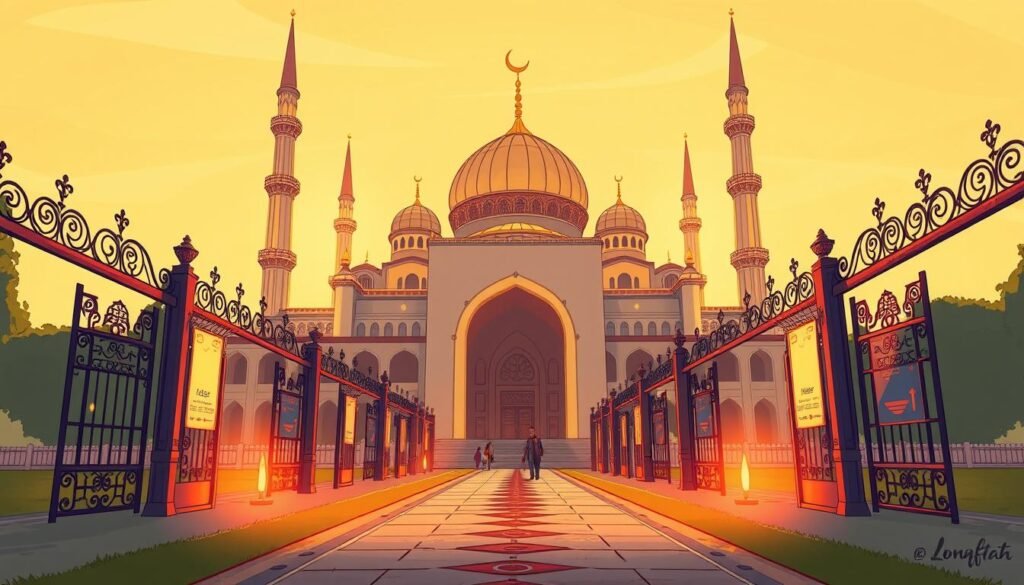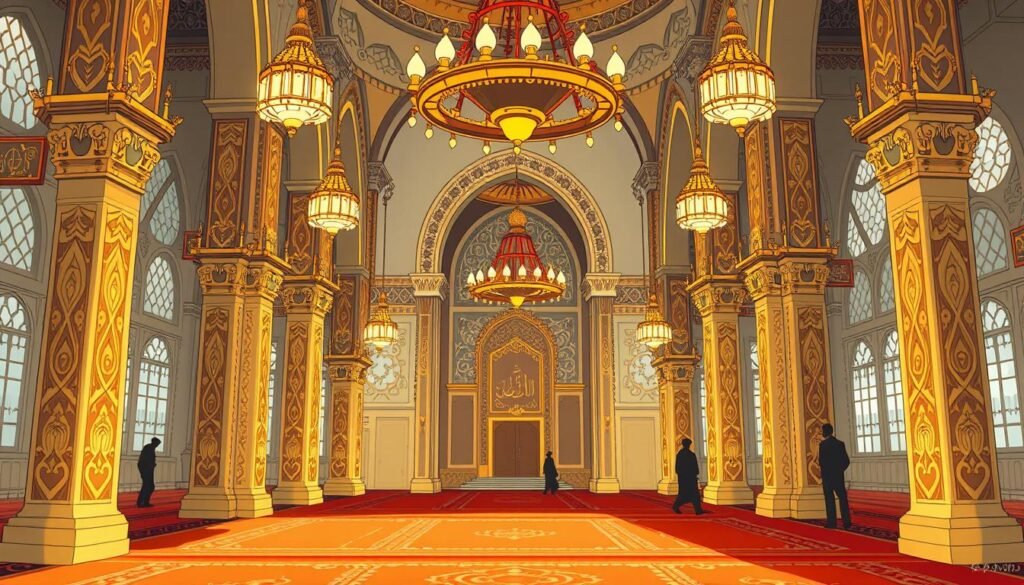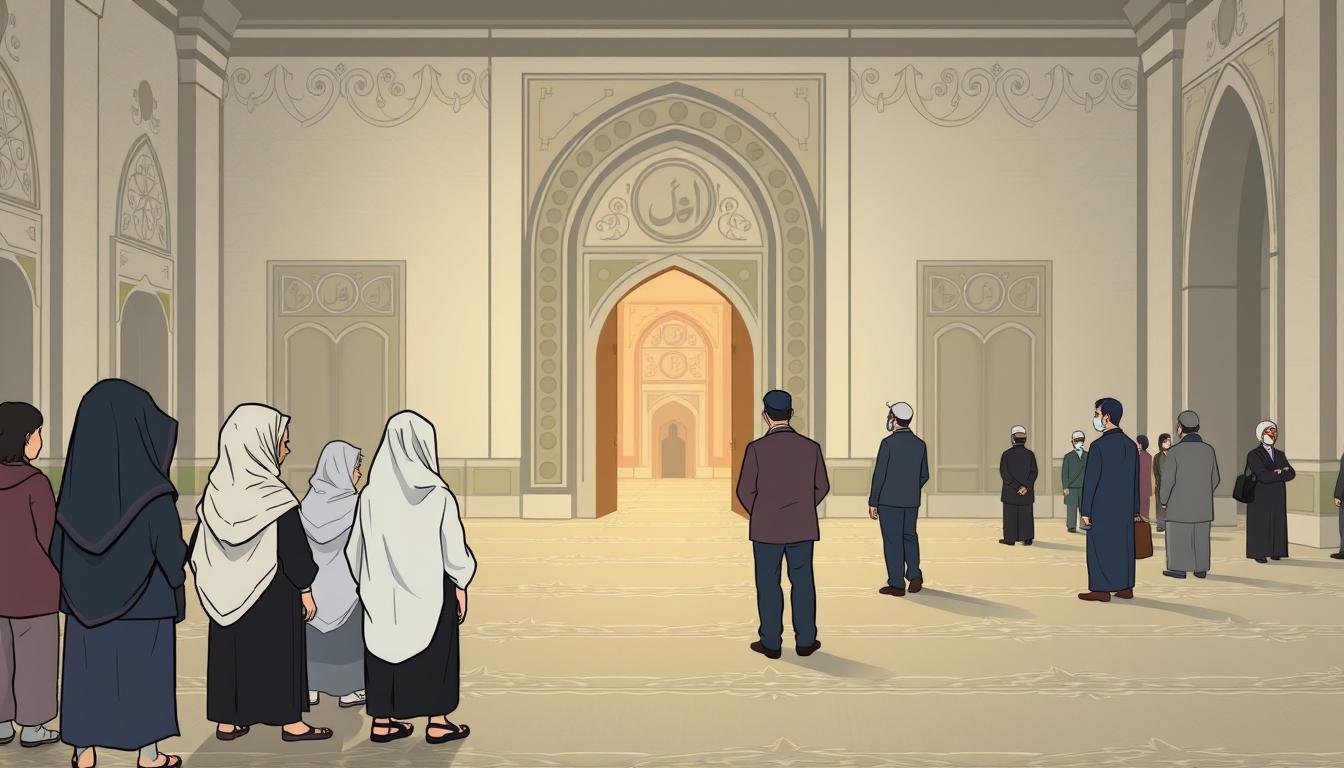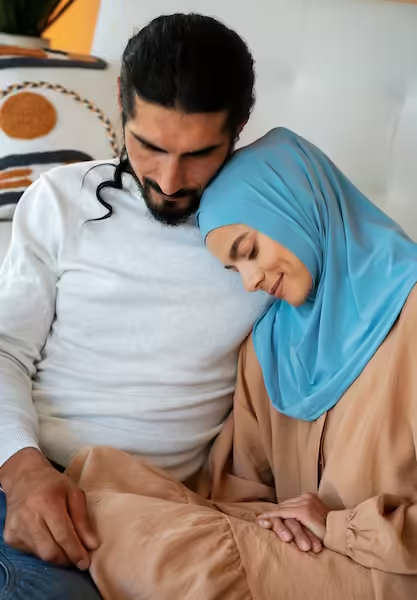Have you ever wondered if you belong in a sacred space? I’ve thought about this a lot. The debate over non-Muslims in mosques is more than rules—it’s about connection.
The Quran says polytheists can’t enter Masjid al-Haram. But, Islamic tradition shows a different side. The Prophet Muhammad (PBUH) welcomed delegations, showing spaces for dialogue.
Today, mosques in the U.S. host events like the Big Iftar. They mix tradition with openness. This article looks at the Islamic ruling on mosque entry where faith, culture, and community meet.
Rulings on mosque entry vary. A 2012 fatwa (No. 2146) says non-Muslims can enter most mosques for learning or respect. But, in Saudi Arabia’s holy sites, strict bans are in place.
These differences are important. By looking at the Quran, Prophetic examples, and modern practices, we aim to bring people together. Let’s see how tradition and inclusivity can work together.
Understanding the Significance of Mosques in Islam
Mosques are more than buildings; they are sacred spaces in Islam. They are where heaven meets earth. These places, called masajid, are where people pray, learn, and come together. They shape the lives of Muslims everywhere.
The Sacred Nature of Islamic Houses of Worship
Mosques are sacred because they bring people together for worship. The word masjid comes from sajdah (prostration). This shows their role in connecting people to Allah. Islamic law tries to keep them sacred, but rules can vary.
For example, Prophet Muhammad welcomed Christians at Medina’s mosque. This shows mosques can be open to all.
Mosques as Centers for Community and Prayer
Today, mosques are places for daily prayers, learning, and helping others. They are centers for charity and unity. Muslims come together to support each other.
Non-Muslims can visit during non-prayer times. This can lead to conversations, as seen in mosque open houses. But, there’s a debate on how to keep them sacred while being open.
The Historical Purpose of Mosque Buildings
Early mosques were simple places for prayer. Over time, they became centers for many activities. They reflect Islam’s complete view of life.
Today, their main goal is to unite believers. Learning about their history helps us understand their role in our world. It also sheds light on interfaith engagement and the changing role of sacred spaces.
Historical Precedents of Non-Muslims in Mosques
Historical Islamic precedents show a complex view of non-Muslims in mosques. In the Prophet’s time, groups like the Thaqif tribe were welcomed in the mosque before they converted. The Najran Christian delegation’s visit is notable—they prayed in the mosque as they did at home, as Sahih Bukhari tells us. These stories challenge the idea that mosques are only for Muslims.
“The mosque is a house of God,” the Prophet said to the Najran delegation. This shows early Islamic openness.
Thumamah ibn Uthal, a prisoner before conversion, was tied in the mosque. These acts show Islam’s focus on dialogue, not just exclusion. Scholars like Ibn Taimiyya later used these examples to support flexible judgments. These stories show Islam’s history of being open to outsiders, finding a balance between sacredness and welcoming others.
Today, debates about can non-Muslims visit mosques should look at these historical examples. While rules today vary, history shows mosques were not always off-limits. By looking back at these stories, we can find ways for different communities to worship together with respect.
Can a Non-Muslim Enter a Mosque? Examining the Core Islamic Ruling
Islamic rules about entering mosques mix scripture and scholar views. The Quran says some can’t go to the Sacred Mosque in Makkah. But, rules for other mosques depend on why someone wants to go.
This shows how old texts and traditions shape today’s debates. It makes us wonder, what are “legitimate purposes” in our world?
Quranic Verses Related to Mosque Access
Surah Tawbah 9:28 says polytheists can’t enter Masjid al-Haram. It shows its special holiness. But, scholars argue if this rule applies to all mosques.
Some verses, like 24:36, call mosques places of guidance. This suggests they welcome those seeking knowledge. This mix of views leads to talks about who can enter mosques.

Hadiths and Prophetic Traditions on Non-Muslim Visitors
Stories from the Prophet Muhammad (PBUH) show non-Muslims in mosques. He let delegations from other faiths come for talks. This shows respect over keeping them out.
One story tells of a Christian scholar being welcomed for a discussion. This shows early Islam was open to different views. It makes us think, how do today’s scholars balance these stories with strict Quran rules?
Different Scholarly Opinions Throughout Islamic History
Scholars have different views on mosque entry. Some say no one can enter, citing Makkah’s rule. Others say anyone can go.
Most scholars agree with the Permanent Committee. They say you can enter for learning, talking to other faiths, or helping others. This view shows Islamic law can change. It lets “legitimate purposes” be judged in different ways, keeping rules current.
Distinctions Between Masjid al-Haram and Other Mosques
Islamic law is complex, with Masjid al-Harem restrictions being very strict. The Sacred Mosque in Makkah is the most sacred place. It is forbidden for non-Muslims to enter, as stated in Quran 9:28.
This rule was set in the ninth year after the Prophet Muhammad moved to Medina. Scholars like Shafi’i and Malik agree with this rule. But the Hanafi school allowed non-Muslims in other mosques, showing flexibility.
Special Rules for Mecca and Medina
Mecca’s sanctity comes from the Quran and the Prophet’s teachings. Imam Shafi’i and Ahmad ibn Hanbal say non-Muslims can’t even enter Mecca’s area. They see it as a spiritual and physical boundary.
Imam Malik’s school goes even further, saying non-Muslims can’t enter any mosque. But the Hanafi school allows non-Muslims in non-haram mosques. This shows how different views exist.
General Mosques vs. Sacred Sanctuaries
Mosques outside Makkah have more flexible rules. The Prophet taught that believers should not harm others. This guides how people interact in mosques.
Mosques like Masjid al-Haram have strict rules because of their divine importance. But other mosques are places for learning, giving, and talking. This shows how Islamic law fits different places without losing its core values.
Regional and Cultural Variations in Mosque Access Policies
Islamic rules on entering mosques are a base for mosque access rules. But, how these rules are followed changes a lot. In the Netherlands, the Milli Görüş Amsterdam-West mosque gets over 800 visitors every week. This shows that community outreach works well when rules match local needs.
In places like the U.S., mosques have faced arson attacks, like in Tennessee in 2010. These events show how cultural settings influence practices based on Islamic values.
Germany’s Open Mosque Day, started in 1997, is a great example of interfaith efforts. On the other hand, Switzerland banned minarets in 2009, showing broader social issues. These examples show how Islamic ruling on mosque entry is seen differently to meet various goals, like security or education.
In Europe, with 49 million Muslims, mosques are balancing visibility and keeping sacred spaces. Turkish-Dutch mosques, for example, host school tours. This helps Europe’s Muslims be seen while keeping their faith.
Volunteers at the MGAW have been working for over 30 years. They use visitor programs to bring people together while keeping religious values. Their efforts show how mosques are changing, keeping their doors open to everyone.
Etiquette and Expectations for Non-Muslim Visitors
Visiting a mosque as a non-Muslim is a great way to learn about Islamic culture. It’s important to be respectful and aware of the culture. The mosque dress code is key, asking visitors to wear modest clothes that cover shoulders, knees, and chests.

“Non-Muslims may enter mosques for tourism or education if intentions are respectful and management grants approval.”
Visitors should dress humbly and act with kindness. Women might wear a headscarf or shawl to follow the mosque dress code. Men should wear long pants and covered shoulders. These rules show respect, not judge visitors’ beliefs.
It’s important to move quietly and remove shoes in prayer areas. Keep voices low to respect the space. Always ask before taking photos, as cameras can disturb prayer. During prayer times, like the Friday Jumu’ah sermon, step aside to let the community worship.
We welcome everyone to these places as learning spaces. Mosque etiquette for non-Muslims is about respect and understanding. It’s a chance to connect with a tradition that values unity and dignity for all.
The Purpose Behind Non-Muslim Mosque Visits
Today, non-Muslims visit mosques out of curiosity, a desire to connect, or to see architectural wonders. These visits show Islam’s openness to dialogue while keeping its core principles. As Fiqh Islam explains, “Non-Muslims can enter mosques for reasons like learning or seeking knowledge.” This is based on the example of the Thaqif delegation’s welcome centuries ago.
“The aim behind allowing them to enter the mosque is to venerate it and acquaint them with the greatness of Islamic civilization.” (Fiqh Islam, 2012)
Many visits are for education, with schools taking tours to show the real Islam. I talked to imams in Chicago and London and found a growing interest in guided tours. Interfaith groups meet in mosques to talk about values like justice and charity.
Mosque tourism is also popular, like in Istanbul’s Blue Mosque. It attracts those who love beauty and history.
Respectful visits serve two purposes: keeping the mosque sacred and building global understanding. Mosques today are architectural wonders and learning centers. They show Islam’s openness to inquiry, as long as visitors respect the mosque’s sanctity.
Famous Mosques Open to Non-Muslim Visitors Worldwide
From Istanbul to Abu Dhabi, mosque tourism opens doors to different cultures. These mosques are both beautiful and welcoming. They let non-Muslims in mosques learn about Islamic traditions without interrupting prayers.
The Blue Mosque in Istanbul is a great example. Visitors go through a special entrance to respect prayer time. It took 7 years to build and can hold 30,000 people for big events.
In Abu Dhabi, the Sheikh Zayed Grand Mosque is a perfect mix. It was finished in 2007 and has marble from all over the world. It offers free tours that show off its huge chandelier and carpet.
The Sultan Qaboos Grand Mosque in Oman also welcomes visitors. It’s open before noon and has a huge minaret and dome. In Malaysia, the Putra Mosque gives pink robes for modesty during tours.
Spain’s Mezquita-Catedral in Córdoba is a former mosque turned cathedral. It shows its 850-year history to visitors. In Kazakhstan, the Nur Sultan Grand Mosque is a modern marvel.
Each mosque has its own rules for visitors. They might have dress codes or specific times to visit. These mosques ask a big question: How can we understand each other better through shared spaces?
Common Misconceptions About Mosque Access Rules
Many myths say non-Muslims can’t go into mosques. But, the truth is more complex. Events like Mumbai’s Masjid Parichay show that many mosques welcome visitors if they follow simple rules. Let’s clear up these important points.
Debunking Myths About Islamic Exclusivity
Islamic law has different rules for mosque access. The Maliki school says no to non-Muslims, but Hanafi allows visits for learning or helping others. Shafi’i and Hanbali schools say yes, but with a guide or during events.
Only Masjid al-Haram in Mecca has a strict no-entry rule. This is because Quran 9:28 calls it very sacred. Scholars like Ayatollah Sistani and Ayatollah Kho’ee have different views. This shows how rules change based on where you are.
Understanding the Difference Between Restrictions and Respect
So, can non-Muslims visit mosques? It depends on respect. Visitors should dress modestly, not go during prayers, and be quiet. Places like Morocco and Turkey use this to teach about Islam to visitors.
This way, people learn from each other. It’s like the Prophet (PBUH) did, inviting others to talk about faith. These visits help break down barriers by showing we are all human.
FAQ
Can non-Muslims enter any mosque?
What are the historical precedents for non-Muslims visiting mosques?
What does Islamic law say about mosque access for non-Muslims?
What etiquette should non-Muslims observe when visiting a mosque?
Why would non-Muslims want to visit a mosque?
Are there famous mosques that welcome non-Muslims?
What misconceptions exist regarding mosque access for non-Muslims?

Embracing Faith, One Insight at a Time!
The teachings of the Quran have always guided my path. With a deep passion for Islamic knowledge, I strive to blend the wisdom of tradition with the relevance of today, making the timeless messages of Islam accessible and meaningful for everyone.
Muslim Culture Hub is my platform to share historical insights and thought-provoking articles, exploring both well-known and lesser-discussed aspects of Islamic culture and beliefs. My mission is to create an inclusive online space where everyone can learn, strengthen their faith, and connect with the profound message of Islam.
Join the journey!
May peace be upon you.









